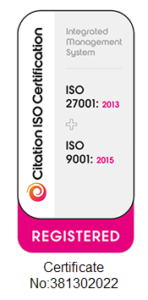A Warning on Virtual Meetings: Don’t be Seduced by Style Over Substance
In the rush to outshine the competition, some virtual meetings have been more flop than fab.
Flashy sites with complex visuals often only create confusion, making it difficult for delegates and even speakers to join meetings. I had an experience like this recently when trying to join a meeting as a speaker. The virtual world was so glitzy and complex that it was impossible to find the agenda or when I was meant to speak. In the end, I had to give up.
The lesson to be learnt from this is that while creative approaches may be appealing, what matters most in any meeting is clarity: ensuring your delegates can attend, that it isn’t made too confusing for them and that they can engage easily, should they wish to.
Just because you can be creative doesn’t necessarily mean you should. Creativity should always have a purpose. Avatars are great, but will they get in the way of seeing your speakers, enabling your audience to choose sessions or seamlessly provide comments and feedback?
If you are holding a medical conference where your audience is likely to consist of many older medical professionals, you might want to consider a less glitzy solution that lets participants join with a simple click from their laptop. On the other hand, if you are doing a trade show for the creative industry, such as for advertising agencies, you can, and probably should, be pushing technology boundaries.
Another important consideration is audience perception.
We recently did an event for a network that supports global patient groups, which was very aware that the type of event they put on could affect sponsorship. While the network could afford a high-quality, 3D virtual platform showing people moving around, we advised them to choose something that would look simpler and more academic. What mattered for them was the quality of information behind the platform.
On the other hand, if you are holding an industry exhibition where sponsors can share their innovations with the audience, you might want to consider a 3D ‘walk around’ exhibit hall, with booths that audience members can visit to interact with sponsors. Your conference, meanwhile, would have a simpler format so the audience can focus on the discussion.
We have built these types of 3D exhibit halls for clients, with different levels for audience members to visit. We have also built microsites for clients to link their meetings, creating opening and closing videos with content and interactive experiences for participants.
When technology is applied for the right reasons, it can excite your audience and generate greater interest. The problem is that people often use advanced technologies because they can, not because it’s what they need. Your investment, the type of platform and technology add-ons, and the level of expertise involved should always depend on what you are trying to achieve.
Start with the end in mind
My advice is to write down why you are having an event, what your budget is, who your audience will be and what their experience with technology is likely to be – age demographic, professional background and so on.
Next, determine what you want your audience to have access to – materials, content, agenda, on-demand access, etc. Then assess your skill set. Can your run it on your own or should you bring someone in to do it for you?
When we pitch to clients, we often show five levels of event options – from basic to ‘Hollywood‘ – and recommend what we think will be most beneficial to the client. We often tell clients what they don’t need, for example recommending they go for a simpler option.
It’s imperative that your pitch partner is honest with you. A while ago a potential client came to us for support. As soon as we heard what they were looking for, we stopped the pitch and told them we didn’t have it at that time. We went away, built our Engage platform and went back to them with a capability no one else had.
Unfortunately, all too often businesses will sell platforms that aren’t designed to do what a company needs or wants. I wonder (half in jest) if in the future, there will be miss-selling inquiries because people will have been saddled with platforms that aren’t fit for purpose, forcing them to spend twice as much to get a functional platform.
The past nine months have been a learning curve for everyone – from meeting organisers, to platform providers and technology companies, to businesses seeking to bring delegates together.
As we move into 2021, knowing what you need, what is available, how much you can or should do on your own, and whether your platform will achieve your objectives will be key to the future of virtual meetings.
Leslie Robertson is the Founder of Open Audience, an audience engagement consultancy that specialises in making life sciences meetings more engaging with more positive, successful outcomes – whether in-person or in the virtual space. The Open Audience team helps to strategise and prepare pre- and post-meeting as well as providing real-time support and guidance during the meeting. Open Audience also offers customisable, multilingual engagement platforms that include interactive polling, surveys, and ideas exchange.

